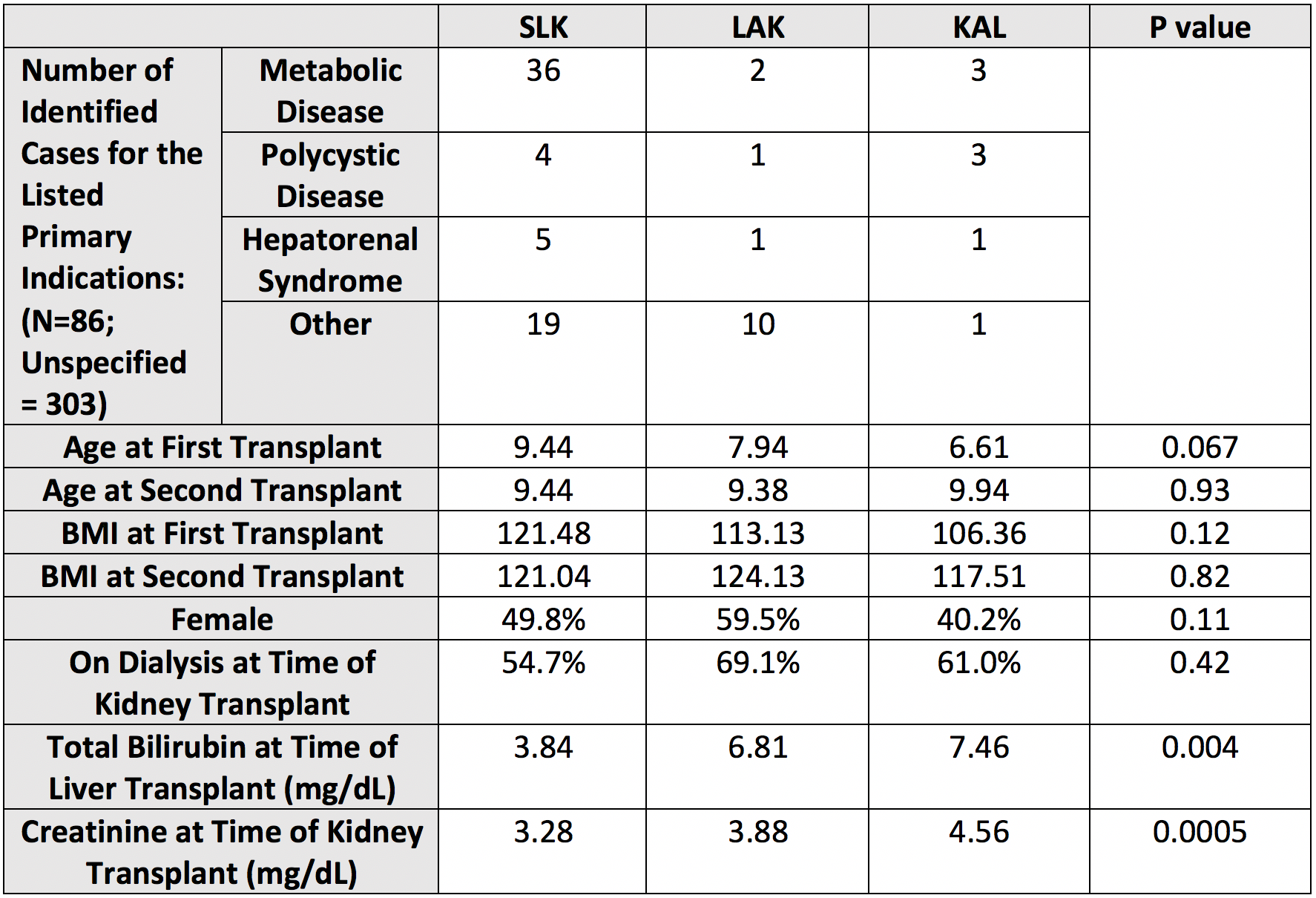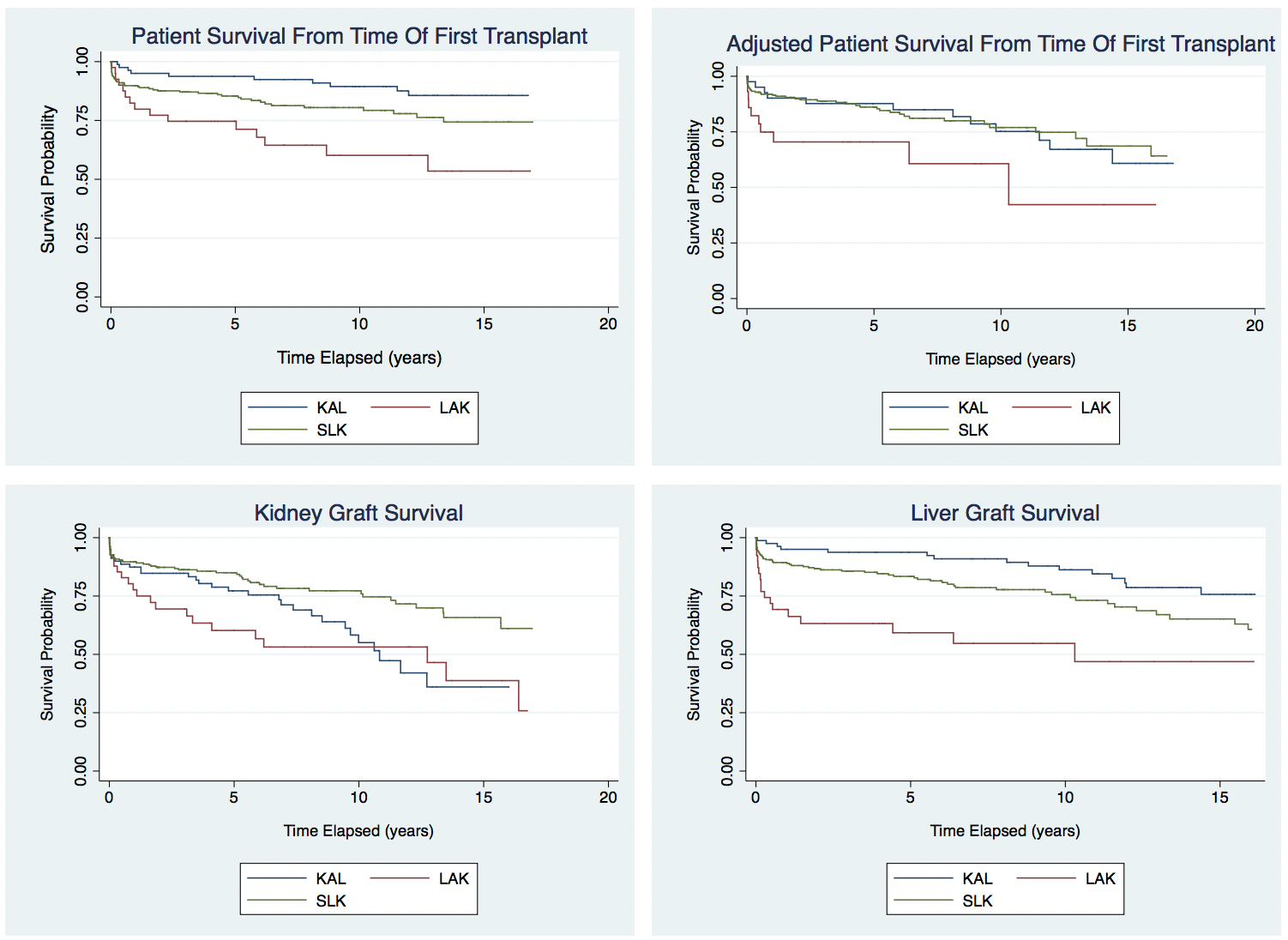Long-Term Pediatric Outcomes of Simultaneous vs. Sequential Liver-Kidney Transplantation: A Review of the UNOS Database
K. Goli1, A. Rana1, J. Goss1, T. Miloh2
1Baylor College of Medicine/Texas Children's Hospital, Houston, TX, 2University of Miami, Houston, TX
Meeting: 2020 American Transplant Congress
Abstract number: 262
Keywords: Graft survival, Metabolic disease, Multivisceral transplantation, Polycystic kidney disease
Session Information
Session Name: Kidney Issues in Liver Transplantation
Session Type: Oral Abstract Session
Date: Saturday, May 30, 2020
Session Time: 3:15pm-4:45pm
 Presentation Time: 4:15pm-4:27pm
Presentation Time: 4:15pm-4:27pm
Location: Virtual
*Purpose: The long-term pediatric outcomes of simultaneous liver-kidney (SLK) transplantation and sequential liver and kidney transplantation, liver after kidney (LAK) and kidney after liver (KAL), remain to be further investigated.
*Methods: The UNOS database was queried for sequential and simultaneous liver and kidney transplants in pediatric (age<18yrs) recipients between 1988 and 2018. Multivisceral listings and retransplants were excluded. SLK transplants were defined as occurring ≤1 day apart. LAK and KAL were each defined as occurring >1 day apart. Patient survival was calculated from time of first transplant and graft survival was calculated since receipt of the second organ. Kaplan-Meier survival analysis compared SLK, LAK, and KAL, and log-rank tests were used to determine statistical significance. ANOVA and chi-square tests were used for univariate analyses.
*Results: Our study included 265 SLK, 42 LAK, 82 KAL pediatric transplant recipients. There was a significant patient survival benefit for KAL relative to SLK and LAK, with KAL resulting in a patient survival probability of 86% relative to 73% for SLK and 56% for LAK at 17 years post-transplant (p<0.0001, Figure 1). When adjusted for 16 covariates, including demographic factors and total time on waiting lists, KAL no longer displayed a significant survival benefit relative to SLK (p<0.77). For kidney graft survival, beginning at 4.5 years post-transplant, there was a significant (p<0.044) survival benefit for SLK relative to KAL and LAK. At 17 years post-transplant, SLK had the greatest kidney graft survival (59%) benefit relative to KAL (36%) and LAK (26%) (p<0.003). For liver graft survival, there was a significant survival benefit for KAL relative to SLK and LAK at all times (p<0.0001). At 16 years post-transplant, KAL showed a 75% survival probability, SLK showed a 56% survival probability, and LAK showed a 46% survival probability. Table 1: Patient Demographics and Clinical Indicators
Figure 1
*Conclusions: LAK has the worst outcomes, likely due to recurrent cholangitis or portal hypertension in patients who are already immunosuppressed after kidney transplant. Therefore, SLK should be considered.
To cite this abstract in AMA style:
Goli K, Rana A, Goss J, Miloh T. Long-Term Pediatric Outcomes of Simultaneous vs. Sequential Liver-Kidney Transplantation: A Review of the UNOS Database [abstract]. Am J Transplant. 2020; 20 (suppl 3). https://atcmeetingabstracts.com/abstract/long-term-pediatric-outcomes-of-simultaneous-vs-sequential-liver-kidney-transplantation-a-review-of-the-unos-database/. Accessed July 1, 2025.« Back to 2020 American Transplant Congress


